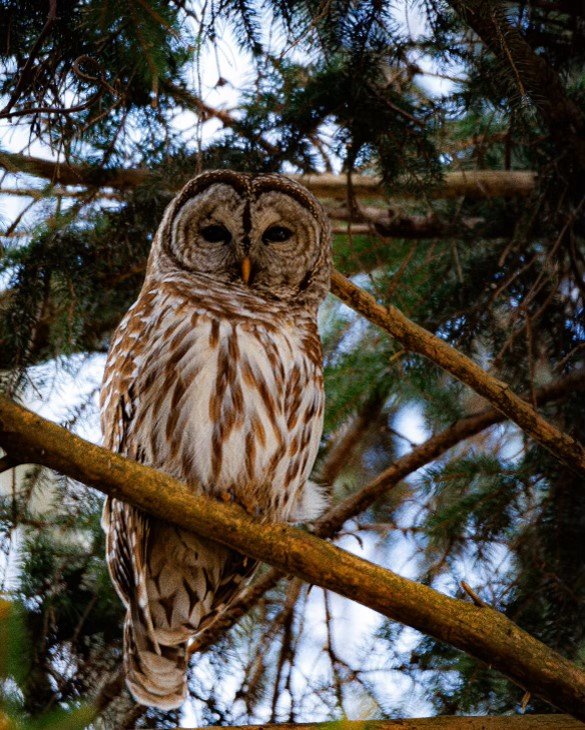Fall Birding at the Bartlett
Birds to spot at the Bartlett in the Fall (clockwise) Black-capped Chickadee, Blue Jay, Yellow-bellied Sapsucker, and the Black and White Warbler.
By David S. Warne. David is Assistant Commissioner at the New York City Environmental Protection Bureau of Water Supply. An avid and long time birder, David leads monthly Birding at the Bartlett walks. The next walk is October 19th, at 7:30 a.m. These walks are free for Bartlett members. Please register here.
Fall is a terrific time to catch up with some of the birds of the Bartlett. You can find year round residents, migrants on their way south and returning birds that will spend the winter in our area.
Bart the Barred owl can be seen and heard throughout the year.
The Bartlett supports a healthy population of birds that can be found in southwestern Connecticut all year long. These include familiar favorites like Black-capped Chickadees, Cardinals, White-breasted Nuthatches, and Tufted Titmice, along with two species of crows, several species of woodpeckers and the wonderful Barred Owls. One particularly noisy group of residents is the many Blue Jays that can be seen throughout the Arboretum. Blue Jays generally do not migrate, although some birds may migrate short distances in some years. But they often will flock together in the fall, as if they were preparing for migration. So look and listen for active and vocal groups that may be found any time of the day.
Many species will appear briefly as they make their way south for the winter. These may be the same birds that stopped over in the spring on the way north. There are nearly a dozen different warbler species that can be found at the Bartlett. In the fall, warblers can be tricky to identify, since many birds are showing immature plumage and the breading plumage of the adults has faded since the spring. Look for small flocks of Yellow-rumped Warblers, Palm Warblers and the occasional Black and White Warbler, which is striking.
Birds returning for the winter include the Yellow-bellied Sapsucker, Chipping Sparrows and Ruby-crowned Kinglets. Also keep your eyes open for flocks of plump Juncos that feed on the ground and fly up into nearby trees and shrubs when spooked.
Did you know that the Bartlett is a birding hotspot that can be found on the free website eBird? Check eBird before heading to the Bartlett to see what species others have observed recently. And consider posting your own list after a visit – it is a great way to contribute to citizen science and share information about the birds of the Bartlett! See link below:



